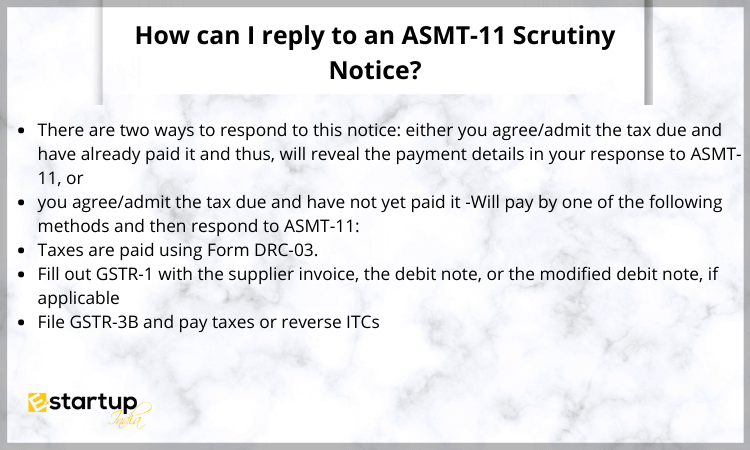Every GST Registered Taxpayer needs to file GST Returns on time and in the accurate manner. Otherwise, hiding transactions, incorrect information or even minor errors can result in scrutiny of GST Returns. Scrutiny Notice will also have strong impact against your business. Therefore, You also have to submit your response accurately and in timely manner if you receive Scrutiny of GST Returns Notice. Not responding to the scrutiny of notice results in action under section 73 (non-fraudulent) and 74 (fraudulent). You will understand more about scrutiny of GST Returns in this article.
GST Scrutiny Assessment: What is it and how does it work?
Taxpayers’ GST returns will be properly checked by an officer based on specific risk factors to ensure that they are accurate. This process is known as GST Scrutiny assessment.
Errors are reported to the registered taxpayer, who receives a scrutiny notice requiring an explanation. A personal hearing, on the other hand, is not feasible in this kind of evaluation.
Before responding to the notification, the taxpayer should pay the difference in tax and interest, if any, and clarify accordingly.
If the officer is satisfied with the response, the taxpayer is informed and the proceedings are discontinued without further action in form ASMT-12 (an order of acceptance of reply).
Further action can be taken by a GST officer if any of the following occur:
- Failure to pay taxes or offer an explanation
- The taxpayer does not react or resolve the error within 30 days after the issuing of notice
- The reply presented is not sufficient for the tax official
Understand the Purpose of Scrutiny of GST Returns
It is the primary goal of a GST return scrutiny evaluation to ensure that the information filed in the return is accurate, including the amount of tax paid vs the amount of tax owed and the amount of eligible Input Tax Credit (ITC) versus the amount of ITC actually claimed. For a tax officer to determine if a scrutiny notice is warranted, there are predefined risk thresholds.
The tax officer can continue with this assessment if these show a high probability of default or fraud. It’s up to the tax officer to make this judgment as well. Orders cannot be passed as the next stage in the scrutiny assessment process since they are not legal or judicial actions. You may find out more about the effects of scrutiny evaluation in the section devoted to it.
The deadline for responding to the Notice
The proper response must be given to the appropriate office’s notice of discrepancy in regard to passing scrutiny within a 30-day time frame unless an extension is granted by the investigating officer.
How can I reply to an ASMT-11 Scrutiny Notice?
Check the notice’s specifics before responding to the tax officer’s request for an explanation. If the taxpayer agrees to pay any additional tax that was mentioned in the notification, he must do so and then respond to the notice in ASMT-11. It’s also advised to contact a professional CA to get the right consultation and accurately reply to scrutiny notice. Alternatively, one of the following might happen:
- There are two ways to respond to this notice: either you agree/admit the tax due and have already paid it and thus, will reveal the payment details in your response to ASMT-11, or
- you agree/admit the tax due and have not yet paid it -Will pay by one of the following methods and then respond to ASMT-11:
- Taxes are paid using Form DRC-03.
- Fill out GSTR-1 with the supplier invoice, the debit note, or the modified debit note, if applicable
- File GSTR-3B and pay taxes or reverse ITCs
If the tax officer is pleased with the taxpayer’s response, he will issue an order notifying the taxpayer of the decision to dismiss the case. The tax officer, on the other hand, will issue an order if he is not satisfied and will seek payment of tax, penalty, and interest, if applicable. On the GST Portal, a taxpayer may see all of their orders.

What happens if you don’t answer a Scrutiny Notice?
Sections 73 (non-fraudulent) and 74 (non-compliance) apply if the taxpayer fails to reply to the scrutiny of GST Returns. DRC-1 form can be used to send a show-cause notice requiring payment of taxes, plus interest and penalty. Depending on the reasons for the disparity, the penalty amount is determined. Sections 65, 66, and 67 can also be used by the officer to conduct audits.
Conclusion
GST Return Filing is mandatory for every business having GST Registration. It is mandatory to file GST returns even if there are zero transactions. Not doing GST Return Filing on time or accurately can lead to hefty penalties or even severe punishments. Hence, now you know all about scrutiny of GST Returns and if you need any other guidance related to it, feel free to contact our tax experts.
Moreover, If you want any other guidance relating to GST Registration, please feel free to talk to our business advisors at 8881-069-069.
Download E-Startup Mobile App and Never miss the latest updates narrating to your business.
